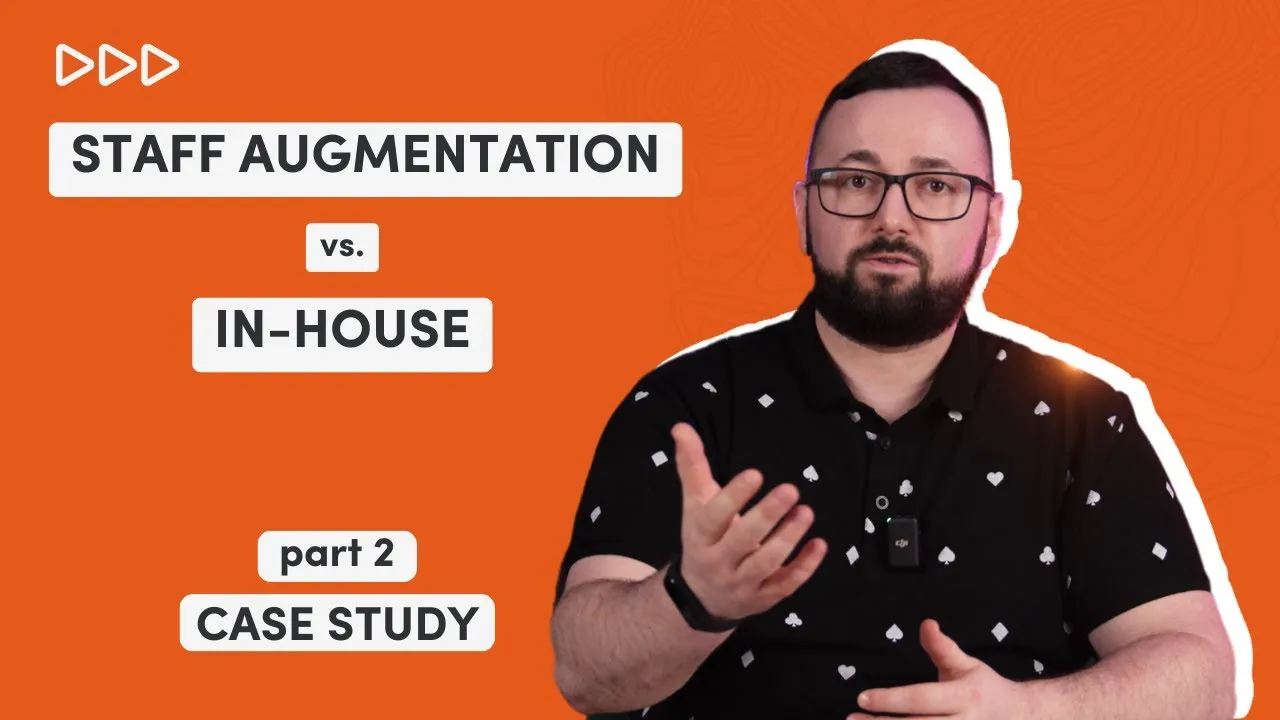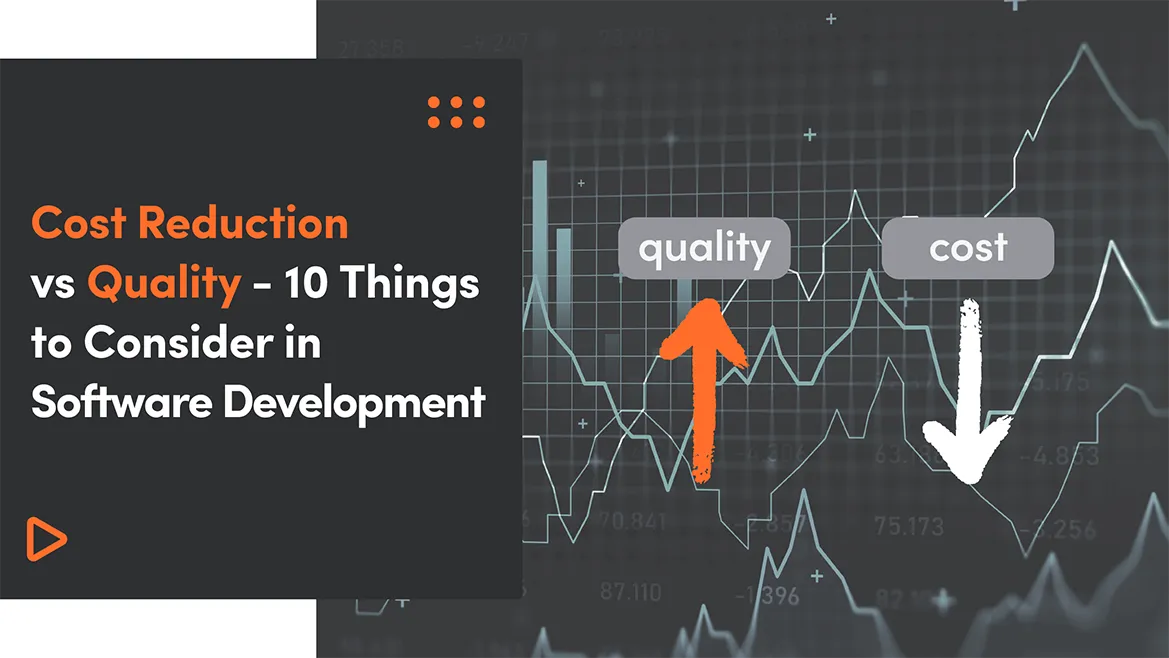The Covid-19 crisis has majorly impacted lots of industries. Some of them went into a complete standstill, but others flourished. Elearning is one of the few that have experienced growth - helping people to better themselves in those challenging times. People are looking for ways to occupy their minds while being indoors. This makes the eLearning market a lucrative business model for those planning to build platforms like Udemy or Coursera.
Here is what you need to know before you start developing your own eLearning platform.
What is an eLearning portal?
Long story short eLearning, also known as electronic learning, refers to education delivered through digital devices such as computers, tablets, and smartphones. It enables students to learn without the need to physically attend a traditional classroom, allowing them to progress at their own speed.
Virtual learning platforms, such as Udemy or Coursera, have gained increasing popularity due to their numerous advantages. These platforms offer flexibility, as learners can access courses anytime and anywhere. Additionally, they provide cost-effective options compared to traditional education, and students have the freedom to learn at their own pace with online course.

Within those platforms we can distinguish several types of learning portals:
- MOOCs (Massive Open Online Courses) like Coursera, FutureLearnr or Udacity
- Virtual learning environments (VLE) like Moodle (open-source LMS) or Blackboard
- Video streaming services e.g. YouTube
- Visual instructor-lead training (VILT) e.g. WebEx
- Discussion boards like Kialo
- Forums e.g. Teacher’s Corner
- Podcasts e.g.Hardcore History
Udemy and Coursera: leading eLearning providers
How do websites like Udemy work?
Online learning platforms, such as Udemy, operate by offering a wide range of lessons and tutorials from both individuals and established institutions. These platforms follow a user-friendly approach: individuals interested in learning to sign up and create an account, enabling them to search for courses that match their interests and begin their educational journey.
In the case of Udemy, the platform extends its services to teachers and instructors as well, providing them with access to a diverse set of tools for content creation and delivery. In this article about authoring tools for e-learning, you will know which authoring tools should you implement in your Platform. Additionally, Udemy takes charge of marketing and distribution to reach a broader audience. However, when establishing your own online learning platform, you have the flexibility to either grant complete freedom to instructors or handle these aspects on their behalf. This allows for a customized approach to suit the specific needs and goals of the online educational platform.
What makes them so successful?
You might wonder why such platforms like Udemy and Coursera are so popular among users. Here are some factors:
- Advanced technology to offer a better learning experience (asynchronous learning, video content e.t.c)
- Extensive database of experts
- Competitive pricing (including free options)
- Course-creation toolkit
- Rating system
- Content in different languages
Why build your own LMS like Udemy?
Benefits and challenges
Online learning has become one of the most sought after mediums to learn something new. There are many eLearning websites already available, but new ones are constantly emerging as the demand rises. Many businesses recognize that building their own Learning Management System is a profitable endeavour.

- time flexibility - websites like Udemy or Coursera offer time flexibility for students, unlike traditional classroom environments. This attracts many learners, especially those with full-time jobs.
- pace of learning - no two students have the same pace of learning. Online learning platforms allow them to go through some topics faster or take more time to study the more challenging ones.
- multiple courses - with an app like Udemy you can sign up for multiple courses at once, which allows students to acquire more than one skill simultaneously.
- cost-effective - online courses are much cheaper than traditional classroom courses. What is more, students do not have to travel from a different city and pay for accommodation and transportation.
Despite the clear advantages and high potential, virtual education is not perfect. Among the most common challenges related to eLearning are:
- self-discipline issues
- lack of feedback from trainers
- lack of face-to-face interaction
- quality of content
- reliance on technology
Steps to building an eLearning website
1. Validate your idea
To properly validate your idea you have to look at the numbers. According to the statistics, the global eLearning market is going to reach $300 billion by 2025. To succeed in the business you need to build an effective and affordable product.
2. Define your niche
Think about the courses you will offer. Focus on the most common niches like business and entrepreneurship, health, fitness, personal development, arts and crafts, computer and technologies. Think about what is the demographic of your learners (age, gender, educational background) as well as about the primary objectives and learning preferences.
3. Choose a business model
Choosing the business model is the first thing you need to know before you start the development. This will determine how you earn money through your platform. You can choose from:

- paid certificates - users pay for a platform-verified certificate
- subscription-based - users buy a monthly or yearly subscription that gives them unlimited access to the website
- affiliate model - the courses have integrated links to books and equipment that might be needed to progress in the course
- corporate collaboration - this is where you collaborate with business organizations to have specific courses
- paid courses - students purchase a paid course and the revenue goes to the instructor and the website owner
Here is a comparison of the most popular online learning platforms:

4. Implement must-have features
There are a number of features that make up the core of almost any eLearning platform. They can generally be divided into student, teacher and admin panel features. Building an MVP with only the must-have features is an amazing way to test the usefulness of your solution on real-life users. You can read more about MVP development in our post Why MVP Development Should Be Outsourced.
Student profile features
- search, category and filter - enables to search for specific keywords and courses, divided into several categories based on subject, prices, expertise level etc.
- recommendations - shows relevant training courses based on ones the student already enrolled for.
- easy payment options - student profiles should be integrated with a payment gateway for easy and secure transactions
Apart from that, each profile should have basic user info a history of purchases and profile settings.
Teacher profile features
- course creation and updates - instructors should be able to create and edit their courses
- dashboard - a feature necessary for instructors to keep track of the courses they have uploaded, number of people participating etc.
Admin profile features
- add, edit, remove users
- add, edit, remove courses
- statistic reports
- manage notifications
- subscription plan change
Consider implementing push and email notifications for the subscribers to inform them about new courses, recommendations, events etc.
5. Choose the development approach
When building a website like Udemy or Coursera you have two options. You may build it from scratch or choose a ready-made solution from the market (see Custom LMS Vs Ready-Made LMS: How To Choose The Best eLearning Software In 2021? ). Let’s talk about it in more detail.
Custom eLearning platform development
If you want to provide specific functionality to a great number of students a custom-made solution would be best for you. Although it is more time-consuming it enables you to implement any required features as well as easily scale the platform.
Selleo can provide you with a web development team with a cost-effective approach and years of experience. We will guide you through the entire process from start to finish and provide support after the launch. Learn more about how to build an LSM from scratch in our blog post linked.
Ready-made products
Open-source software like Moodle, Joomla or Canvas has basic student management features and many free plugins. However, it might be tough to implement a specific functionality or import custom themes.
Offering a unique design will make your platform stand out from the competition. You also have to choose an optimal tech stack that matches your needs.
When it comes to UX and UI simplicity is the key. The eLearning website should be intuitive and operate without much effort. What is more, as mobile devices are an inherent part of our lives, the learning platform should include a responsive design. Apart from the right technology, you can also use external plug-ins or third-party tools to deliver an engaging user experience.
6. Engage good educators
A good UX and UI and first-class performance will not give you success without great content. The content should be delivered by top-notch educators, so you should consider cooperating with universities and other educational establishments.
An example of such a master collaboration is MasterClass, offering courses from Marc Jacobs, Margaret Atwood, Neil Gaiman, Annie Leibovitz and other famous people.
Our case study of eLearning platform development
Our client from Sydney, Australia wanted to create a social e-learning platform available for everybody, not just students. An educational solution that is equipped with a simple design and uncomplicated interface allows to motivate and encourages more curiosity from learners. It delivers a flexible and personalised dashboard that incorporates parts of machine learning into online and face to face learning for the best results.

This progressive social learning platform combines both web and mobile solutions for the best user experience. With the wide content repository including videos, articles, books, audio files and slides students can adapt their course content to individual needs.
Case study about elearning development platform of Neutopia includes course features like:
- progress tracking
- slide page
- activity feed
- personal workspace
- notifications
- search
- smart triggers
This educational platform can be used by both individuals and educational institutions who want to promote their resources or courses. Moreover, it addresses the specific needs of:
- authors and experts where peer to peer learning is the best way to grow together
- teachers and schools delivering a place where people can learn from one another
- teams and businesses that what to create a shared culture of appreciation and common purpose
Conclusions
Platforms like Udemy or Coursera offer online education and training programs for individuals from all around the world, interested in various courses. Elearning is becoming a significant part of the education industry allowing a unique and renewed distance learning.
Constantly increasing demand means an amazing opportunity for businesses to create solutions of their own. You have to keep in mind that a highly competitive environment means your product has to have expectational functionalities as well as a learning experience.
If you want to build an eLearning product that will answer the needs and requirements of your customers, contact Selleo. Together we can create a customized solution and become a leader in the electronic education industry.




